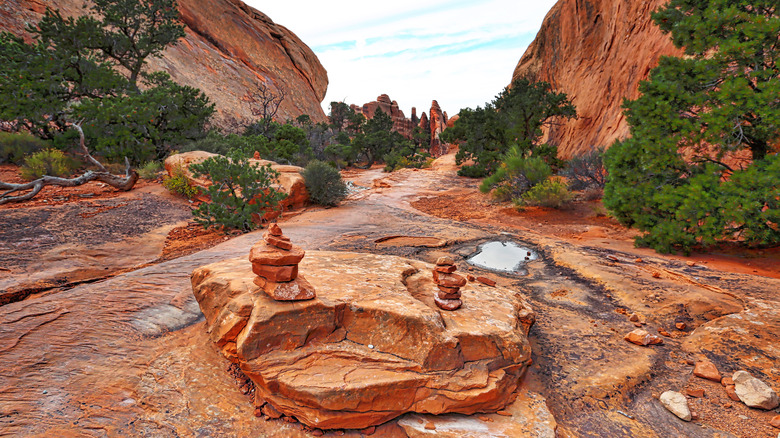Destinations United States
Sarah Gilliland
The United States National Park Service, known as NPS for short, is truly a national treasure. Over 100 years ago, President Woodrow Wilson signed an act creating the National Park Service to protect monuments, reservations, and parks. At the time, only 35 national parks existed. Today, there are over 400 areas covering all 50 states that are protected by this federal bureau that is part of the Department of the Interior.
Many visitors to these spaces feel very protective of them and what they represent of our country’s past and future. Programs aimed at “leaving no trace” educate visitors on the importance of caring for these finite spaces. This includes not disturbing the rock cairns often found on hiking trails. Differing opinions on building and removing them exist, but the NPS is very clear on their thoughts — rock cairns should be undisturbed, no matter when or where you find them.
What are rock cairns?

rdonar/Shutterstock
Rock cairns are directional markers that help hikers stay on the trails or find their way if they happen to get lost. These formations are created by stacking rocks of different heights and widths, and the smallest stones on top of the pile point the way hikers should go. According to the NPS, “Every park has different rules about cairns, so it’s always a good idea to check out a park’s website for information on hiking trails before you go.”
While the main use of rock cairns is directional, NPS has discovered they also have historical value. Waldron Bates, a pioneering creator of hiking maps, began creating cairns in 1896 using a method that became standardized and widely used. These Bates cairns were replaced in the 1950s and 1960s. The NPS began returning the formations to the Bates standard in the 1990s as they uncovered the history behind the unique formations.
Rock cairns: helpful or harmful?

Georgepeters/Getty Images
Each park in the National Park System treats rock cairns differently. Some parks, such as Acadia National Park in Maine, use the formations as hiking guides and to highlight the area’s history. “Other parks, like Capitol Reef National Park in Utah, don’t build or maintain rock cairns and warn visitors to not rely on these rock piles to guide their hike,” explains the NPS. However, all of the national parks agree that knocking down, moving, or creating new cairns can be detrimental to visitors and the park itself.
Any movement of rocks can contribute to soil erosion or disturb the environment of the plants and animals living in the park. Additionally, moving or creating your own rock cairn can confuse hikers and cause them to get lost. Instead, it is best to leave the formations where and how you see them, and if you have any questions or concerns about the formations, ask a park ranger for help.

